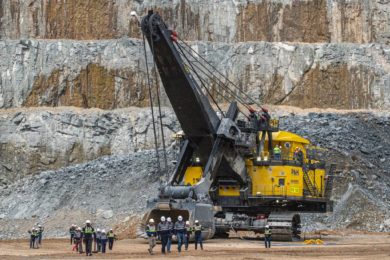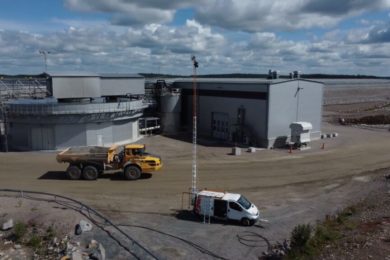VVC Exploration Corp is currently working to bring its flagship Samalayuca copper property in Chihuahua, Mexico to production. The NI 43-101 for the property was completed by Dr. Michel Boliy in 2013 represents an Inferred Mineral resource of 4.1 Mt of copper ore grading 0.47% Cu and 5.8 g/t Ag.
“Pilot mines work well if you know you have minerals in the ground and can define an area that is easy to mine with modular technology that can be easily scaled,” Jim Culver, President and CEO of VVC Exploration, told the Investing News Network (INN). “It’s easier to make adjustments on a 30,000-t/month pilot-mining operation than on a 300,000-t/month full-scale operation. You have a two- to three-year period that allows you to make adjustments if required. In our opinion, it’s a cheaper way to learn and make those adjustments than completing a capital-intensive full feasibility study.”
So, a pilot mine is a mining operation undertaken in the absence of a feasibility study. Pilot mining eliminates the considerable expense required for the feasibility study and does not require as much exploration. For the pilot mine to be a viable option, the nature of the claim needs to allow for low-cost recovery of the ore, e.g. (i) the claim has been previously worked and there is a high degree of certainty of commercial tonnages of material available, (ii) the deposit is close to the surface, making open-pit mining an option or (iii) the material is recoverable with a low-cost technology (e.g. heap leach, etc.).
If the necessary conditions are in place, a pilot mine becomes a viable option, reports INN. This approach has clear advantages: 1) it significantly de-risks the project by becoming a self-funding production/exploration program, and 2) in addition, it can provide excess cashflow beyond the costs of the exploration.
One of the main goals of a pilot mine is to demonstrate flowsheet viability and mitigate metallurgical risk. This is critical to acquiring further capital to move a mining project forward to commercial production — especially for more complex deposits or those processes using new technologies. The results of pilot projects in the mining space provide the ‘proof of concept’ a company needs to show the proposed mine can be profitable.
The pilot mine stage of a mining project may also be considered phase one production — or the first step on the path to full-scale production. Unlike bench-scale testing in the lab, a pilot-scale mine allows the company to study the proposed process under the same conditions as will exist in the full-scale mill without the cost of experimenting on large tonnages of ore. A phased approach to mine development and production reduces the risk of operational failure when scaling a process to commercial size.
The metallurgical data (i.e. yields and product purity) and process economics (i.e. capital and operating costs) generated during piloting are typically used in the design of the full-scale commercial plant. The environmental data (i.e. impact on local water supplies and the area in general) obtained during pilot plant production is used to verify that the operation is able to meet the environmental requirements for permitting a commercial-scale mine.
“Even if you aren’t starting with a defined resource base, but you know there is enough economic ore to justify mining for four to seven years, you can start a pilot-mining operation instead of a full feasibility study,” said Culver. “After three to four years of mining, which shows the viability of the deposit and production methods, you’ve completed the equivalent work of a feasibility study and can begin a full-fledged mining operation.”
Not only does this stage allow for the testing of operations and product, and determining the proper size and type of equipment for the commercial plant, it’s also an excellent way to train mill personnel and demonstrate the project’s longer-term potential to the local community.
The Phase 1 production area at Samalayuca includes less than 10% of the mineralized zone of the property. Production is expected to begin very soon and last for three years and produce between 7 and 8 Mt of ore (70 to 80 Mlb of copper). VVC’s 67.25% share of Phase 1 production at $2.25/lb is expected to be in excess of $125 million.










